
At one time St. Andrews was one of the most important Scottish towns there was. It was a major religious centre and a seat of learning for hundreds of years.
The town itself is steeped in history and I am barely scratching the surface.
George Wishart.
We take the freedom of speech, thought and religious worship for granted these days, however these rights were gained through the blood and sacrifice of people such as George Wishart.
Wishart was a Protestant preacher at the time of Catholic suppression of anything other than Catholicism. The nearby plaque says it all.
"George Wishart 1513-1546. A powerful Protestant preacher. He was betrayed to Cardinal Beaton. Brought here. Put in the Sea Tower (of St. Andrews Castle.) Condemned for hearsay and burnt at the stake on 1 March. The lettering GW on the roadway marks where he died. His friends conspired against the Cardinal, and on 26 May gained entry to the castle. Killed him and hung his body from the battlements. Then together in the castle they created the first congregation of the Protestant Church in Scotland."
Then presumably got out of town before the troops arrived!
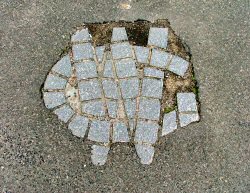 The GW Monogram
The GW Monogram
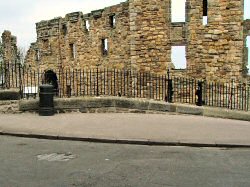 GW monogram outside St. Andrews
Castle
GW monogram outside St. Andrews
Castle
Further reading on the martyrdom of George Wishart can be found at the Cloud of witnesses web site
St. Andrews Castle
The castle has seen a lot of turbulent times in its history. Following the murder of Cardinal Beaton the castle was besieged and held out for over a year against the forces of the Earl of Arran. One plan to break the siege was to tunnel under the castle walls and then explode a charge to bring down part of the wall and enter the castle. The defenders could hear the miners tunnelling through the sandstone towards the castle, they made two attempts to countermine, dig another tunnel and attack the miners. This was successful and the mine failed. The siege was eventually broken by the guns of the French Navy. The defenders were captured, amongst which as John Knox who became a galley slave. Following his release he returned to Scotland and became a powerful force in the Protestant revolution which eventually succeeded and Scotland became a Protestant country which lasted until today's enlightened times.
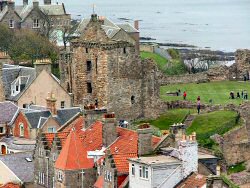 St. Andrews Castle
St. Andrews Castle
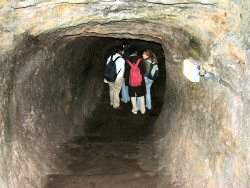 Inside the mine. The counter mine
is considerable narrower than this tunnel. Not for the claustrophobic.
Inside the mine. The counter mine
is considerable narrower than this tunnel. Not for the claustrophobic.
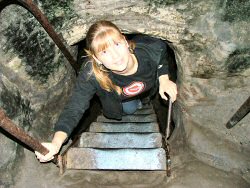 The breakthrough from the counter
mine to the mine.
The breakthrough from the counter
mine to the mine.
St. Andrews Cathedral
Q. What has Greece and Scotland got in common?
A. They share the same patron saint.
At one time St. Andrews Cathedral was THE place to be in Scotland. Its seat of learning, which continued after The Reformation and continues to this day.
The Reformation was not kind to St. Andrews Cathedral. In common with most of the post-reformation cathedrals, St. Andrews and its attendant buildings fell into disuse and quickly became a source for local building materials.
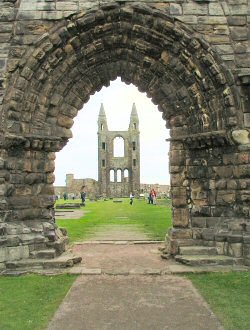 Looking towards the high alter
from the main entrance
Looking towards the high alter
from the main entrance
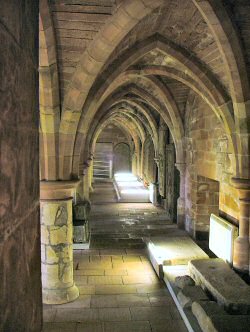 Inside the headstone vault
Inside the headstone vault
Tom Morris
St. Andrews is also famous for its golf. Within the precincts of the cathedral is the graves of the Morris Family.
Tom Morris Senior, was a skilled club and ball maker and an accomplished golfer. His son also called Tom Morris followed in his fathers footsteps, winning the Open in 1868. He then won the Open four consecutive times (1868 - 70 and 1872.
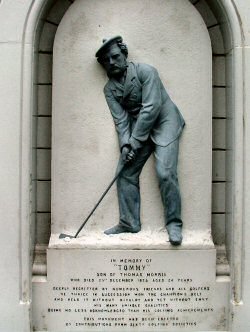 The memorial to Tom Morris junior.
The memorial to Tom Morris junior.
Visit St. Andrews web site